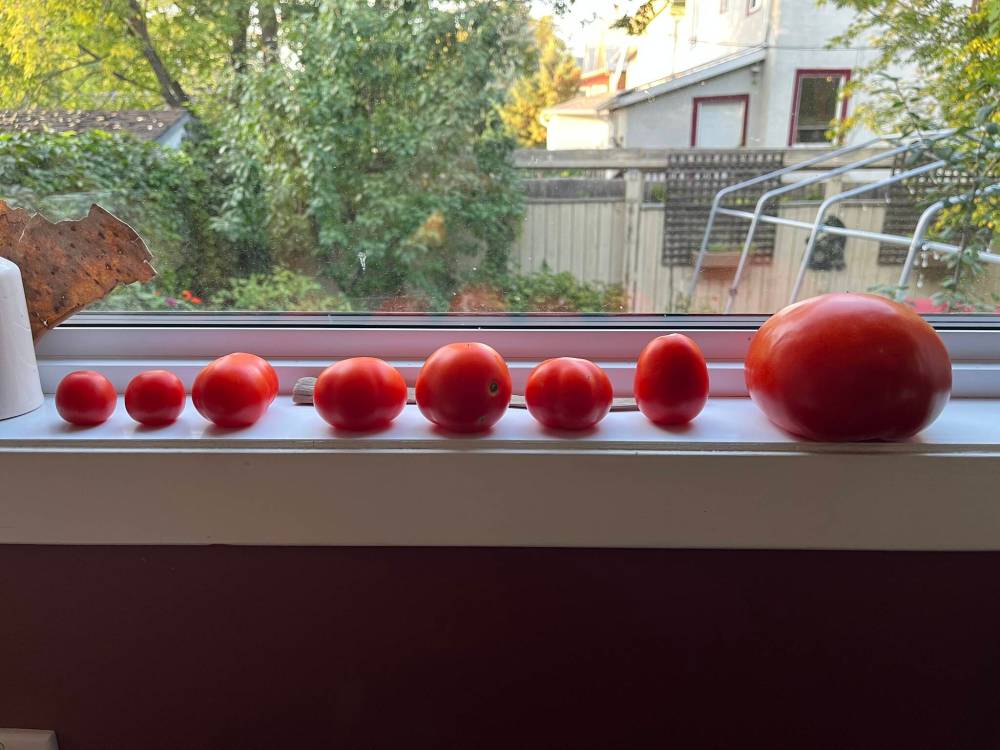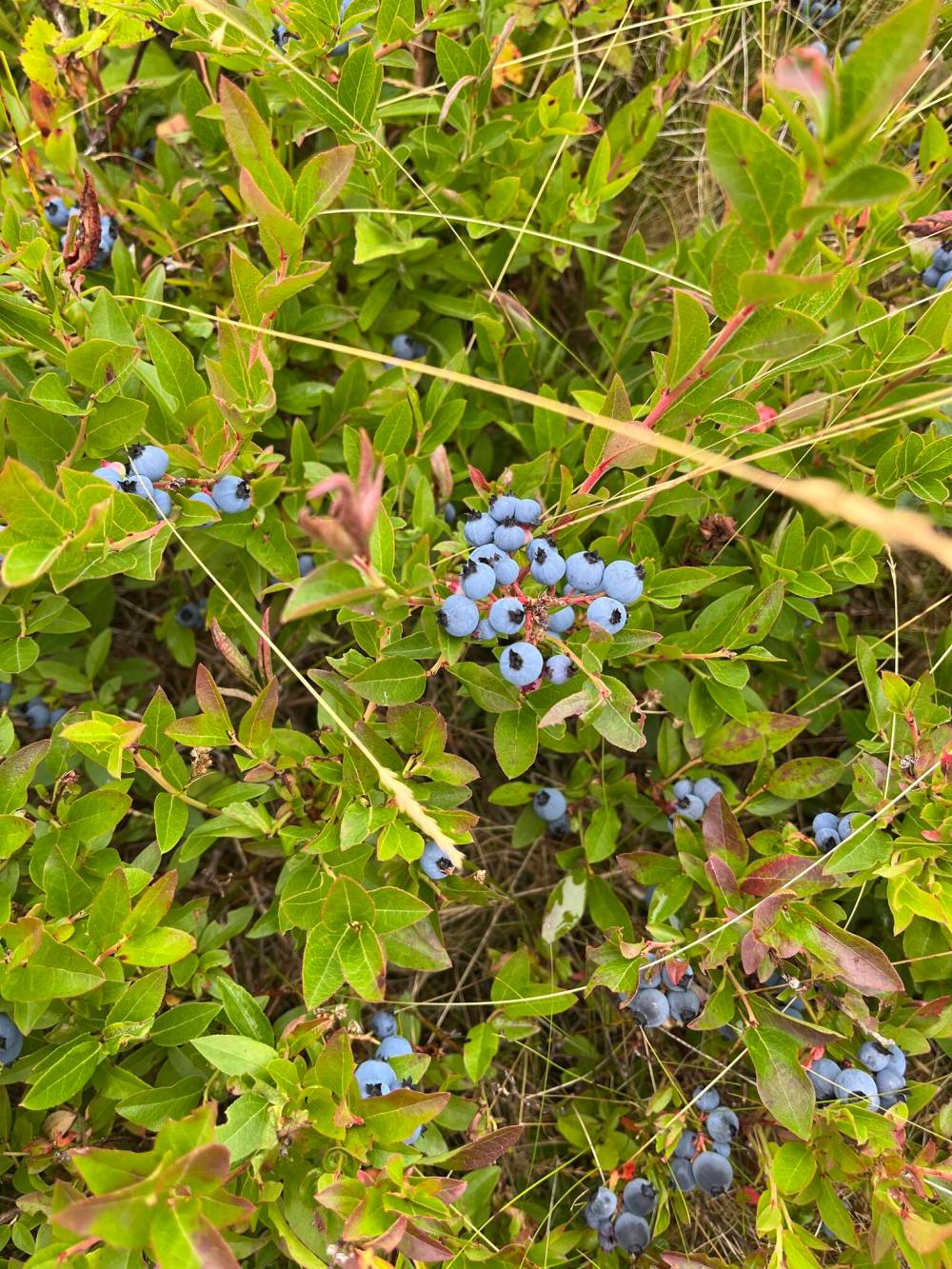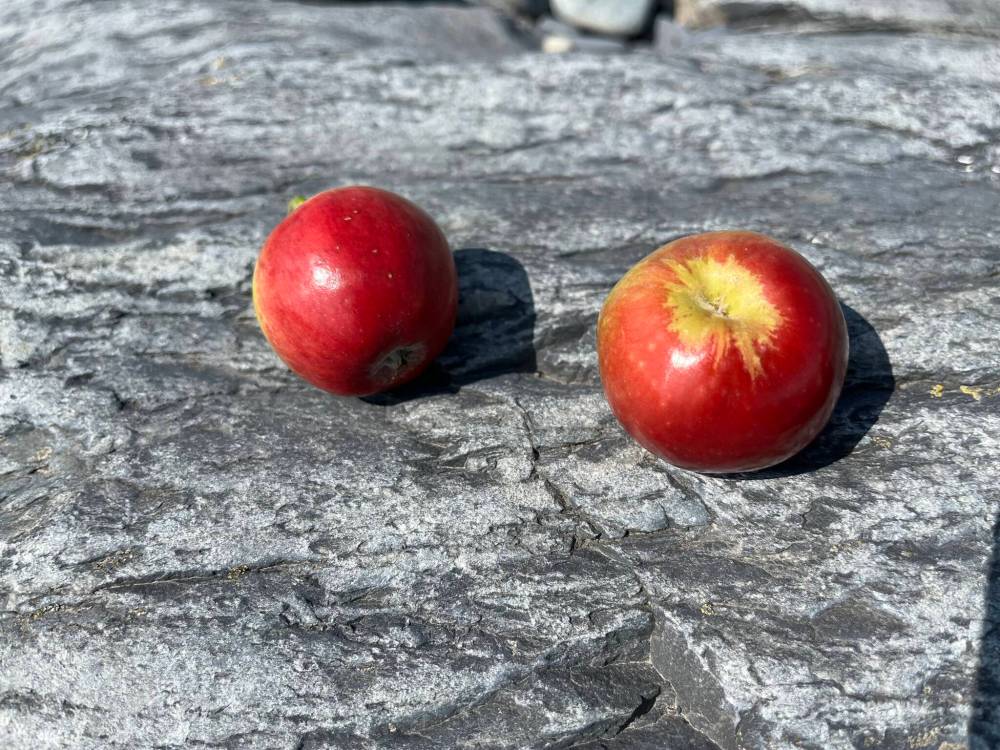Fruits of labours, travels a study in variety, diversity
Advertisement
Read this article for free:
or
Already have an account? Log in here »
To continue reading, please subscribe:
Monthly Digital Subscription
$1 per week for 24 weeks*
- Enjoy unlimited reading on winnipegfreepress.com
- Read the E-Edition, our digital replica newspaper
- Access News Break, our award-winning app
- Play interactive puzzles
*Billed as $4.00 plus GST every four weeks. After 24 weeks, price increases to the regular rate of $19.00 plus GST every four weeks. Offer available to new and qualified returning subscribers only. Cancel any time.
Monthly Digital Subscription
$4.75/week*
- Enjoy unlimited reading on winnipegfreepress.com
- Read the E-Edition, our digital replica newspaper
- Access News Break, our award-winning app
- Play interactive puzzles
*Billed as $19 plus GST every four weeks. Cancel any time.
To continue reading, please subscribe:
Add Winnipeg Free Press access to your Brandon Sun subscription for only
$1 for the first 4 weeks*
*$1 will be added to your next bill. After your 4 weeks access is complete your rate will increase by $0.00 a X percent off the regular rate.
Read unlimited articles for free today:
or
Already have an account? Log in here »
Last Sunday, the last official evening of Winnipeg summer.
I was sitting inside the darkening screen porch, looking at the Halloween pumpkin eyes of the house opposite in the plunging dark, listening to the revving cars on Portage.
And I started thinking about apples and peaches and tomatoes. Oh my.

Russell Wangersky / Free Press
The last of the window-ledge tomatoes finish ripening.
And then, about ground berries: blueberries, partridge berries and bakeapples.
And us.
This is a lesson in Canadian geography, sketched out in fruit.
I spent most of my growing-up years in Nova Scotia and New Brunswick. I came to Halifax with my parents when I was three, went to high school in New Brunswick and university in the Annapolis Valley, around the time when Alberta’s premier was talking about “letting the eastern bastards freeze in the dark.”
Every now and then, even in Nova Scotia, you’d hear someone from out west complaining about eastern lazy layabouts “living on the pogey,” and I’d think about the low-wage jobs I’d taken, sometimes two or more at a time, trying to get by. I worked in Nova Scotia’s provincial archives and as a job printer at the same time, starting early at the print shop and then biking in the early afternoon for the late shift into the evening at the archives. I worked summers in Wolfville, N.S., while I was at university, shelving books in the Acadia University library, taking weekend standby shifts at the fire department for cash, heading to the Tim Hortons to look for construction labourer odd-job work in any spare time. I painted, shingled, cut grass, split wood.
And got to know apples. My gosh. Apples were cheap and varied: the white-fleshed Cortlands, the sweet, sandpapery dull-brown Russets, the Northern Spys and the Pink Ladies and any number of apples you cannot even find now, because they don’t meet the standard of travelling well and lasting for long periods on grocery shelves.
Eating apples and pie apples, storing apples and drying apples. Cider apples and crabs.
Each one different, and out there, in roadside ditches and failed orchards, any number of accidentally cross-bred cultivars with their own special features to enjoy.
Then, I spent two short years working in Toronto, living in a small apartment just above the St. Lawrence Market. I knew about apples — nothing about peaches, except that there were freestone peaches and clingstone peaches, and the difference was mainly in the ease of eating.
My first summer in Ontario, I learned there were almost as many peaches as apples: huge whitish-fleshed peaches, a few of which farmers in the market would leave split in half so you could marvel at their royalty, deep, almost red-fleshed peaches, the early, sharp small fruit — it was an awakening. So many choices, each one its own special thing.

Russell Wangersky / Free Press
Fall blueberries, Conception Bay North, NL.
Then came Newfoundland and its berry barrens. Some, I still don’t know: marsh berries and mash berries, to name a couple — though honestly with Newfoundland’s nomenclature, there’s always the chance they are the same. Dewberries, a blackberry-like fruit we called dog berries in Nova Scotia, while in Newfoundland, dogberries are the clustered orange berries of the Mountain Ash.
You could pick gallons of Newfoundland blueberries in an afternoon, knowing as you did there are just many varieties of blueberries in those buckets as there are apple varieties in Nova Scotia. Varieties that mix and match in your bucket, some sweeter, some tarter, some seedier. Partridge berries? Not supposed to pick them until after the first frost, because the insects that fertilize their flowers leave a grub behind that departs with the first sharp cold. Some people call small bright-red clusters of berries “bunch berries” and think them poisonous; others call them “cracker berries” after the snap of their seeds between your teeth and think them edible.
After that, Manitoba (with a short stretch in Saskatchewan).
And here, it’s tomatoes.
Until I came here, I can honestly say I’d never had a true tomato.
Put simply, a tomato in Newfoundland is often a hard, woody, disappointing thing with little in the way of flavour.
Manitoba? Two-thirds through September, and we’re just finishing up now with the season of the tomato flood.
The bulbous heirloom tomatoes that look sometimes like a gruesome injury best treated with a quick bag of ice, compression and elevation: the huge beefsteak wonders. The steady rain of the Tom Thumb tomatoes, more ripening every day. The blackish-green ones. The yellow ones.
And all of them with a depth of flavour, a richness, that I didn’t even know existed until now.
Changing places, changing seasons.

Russell Wangersky / Free Press
Wild apples, Adam’s Cove, NL
I look forward now to stews and fall sauces, to cooking without overheating the kitchen, to apples and the cold sharp bite of the wind, to the change in smoke. There’s a line where the evening air starts to cool enough that the smell of smoke changes from the threat of forest fires to the sharp nearby tang of someone burning pine slab in an outside fire pit, intent on pushing back the cold blanket of night air.
I look forward to future spring: to the green under burned trees, to next year’s blueberries, to new challenges. It’s how I survive.
And I think about that — looking forward and looking up — while I listen to people intent on tearing things down, when everything ahead is a disaster and a ruin.
We’re a big country. There’s a lot we don’t know about each other — there’s a lot we assume.
We should start acting bigger than just ourselves, spending more time listening.
More time discovering our neighbours, and their treasures. It’s a happier thing.
Russell Wangersky is the Comment Editor at the Free Press. He can be reached at Russell.wangersky@freepress.mb.ca.

Russell Wangersky
Perspectives editor
Russell Wangersky is Perspectives Editor for the Winnipeg Free Press, and also writes editorials and columns. He worked at newspapers in Newfoundland and Labrador, Ontario and Saskatchewan before joining the Free Press in 2023. A seven-time National Newspaper Award finalist for opinion writing, he’s also penned eight books. Read more about Russell.
Russell oversees the team that publishes editorials, opinions and analysis — part of the Free Press‘s tradition, since 1872, of producing reliable independent journalism. Read more about Free Press’s history and mandate, and learn how our newsroom operates.
Our newsroom depends on a growing audience of readers to power our journalism. If you are not a paid reader, please consider becoming a subscriber.
Our newsroom depends on its audience of readers to power our journalism. Thank you for your support.


